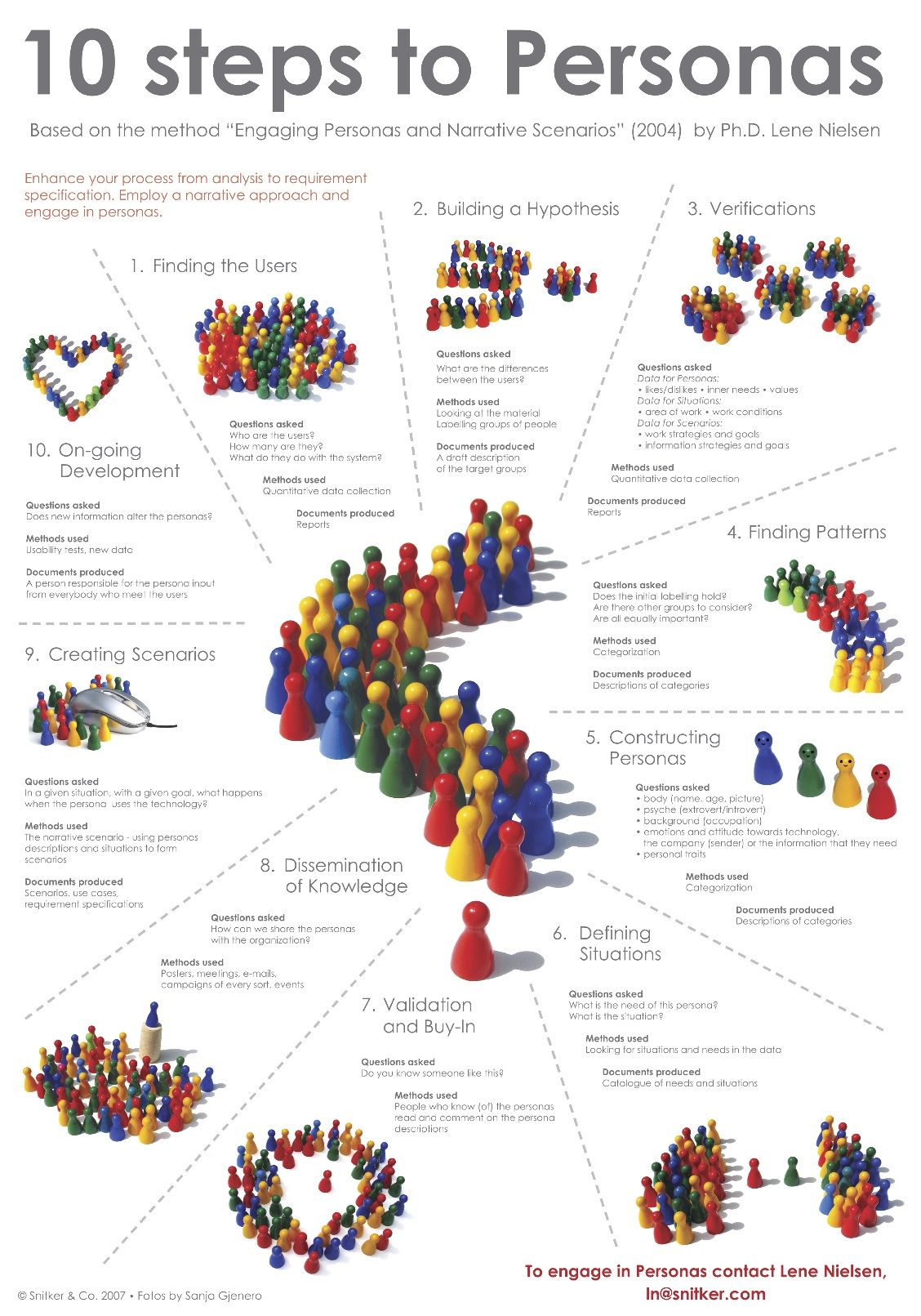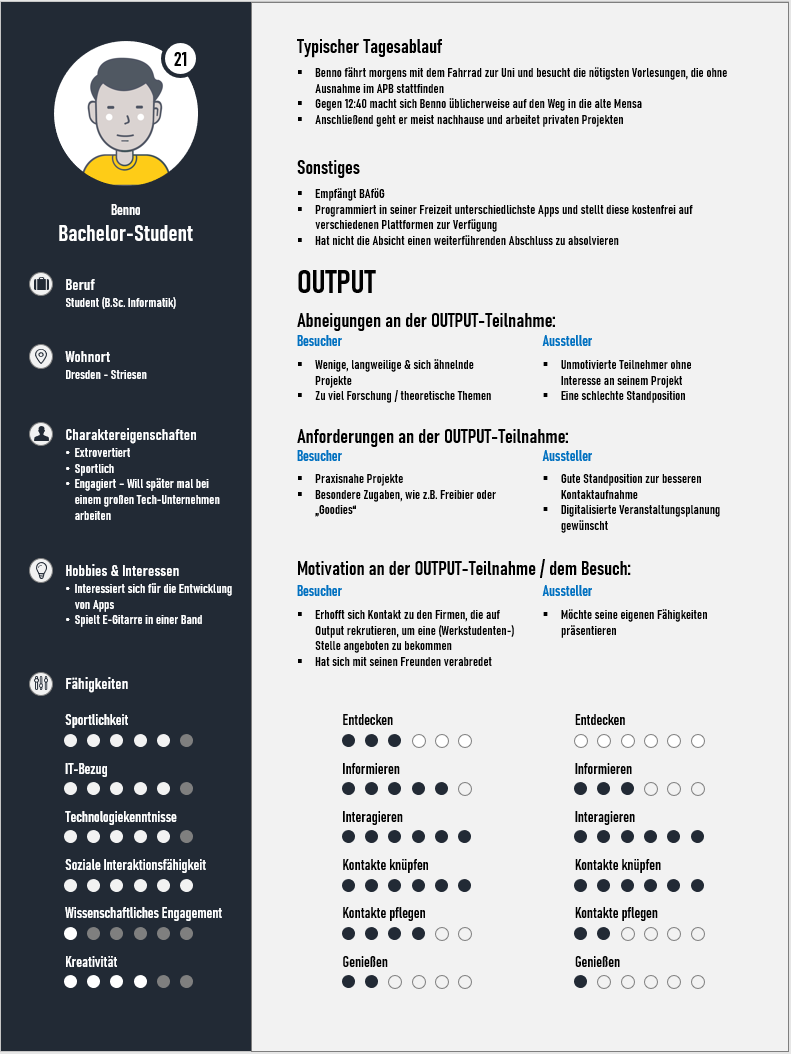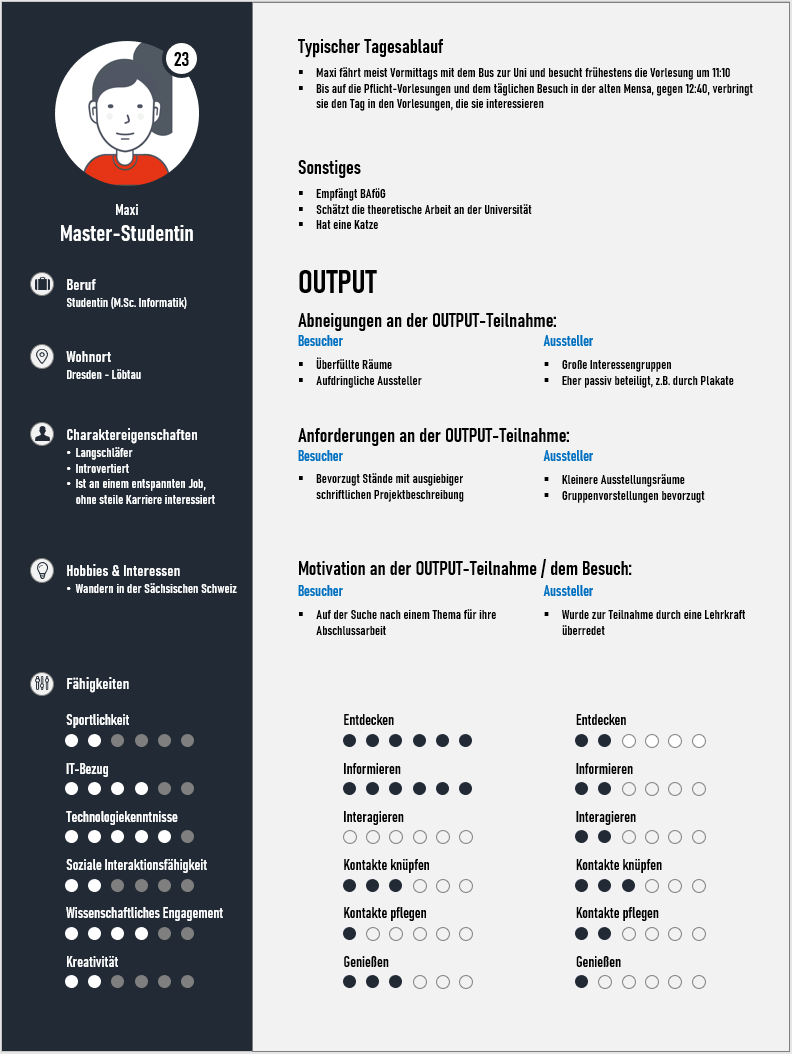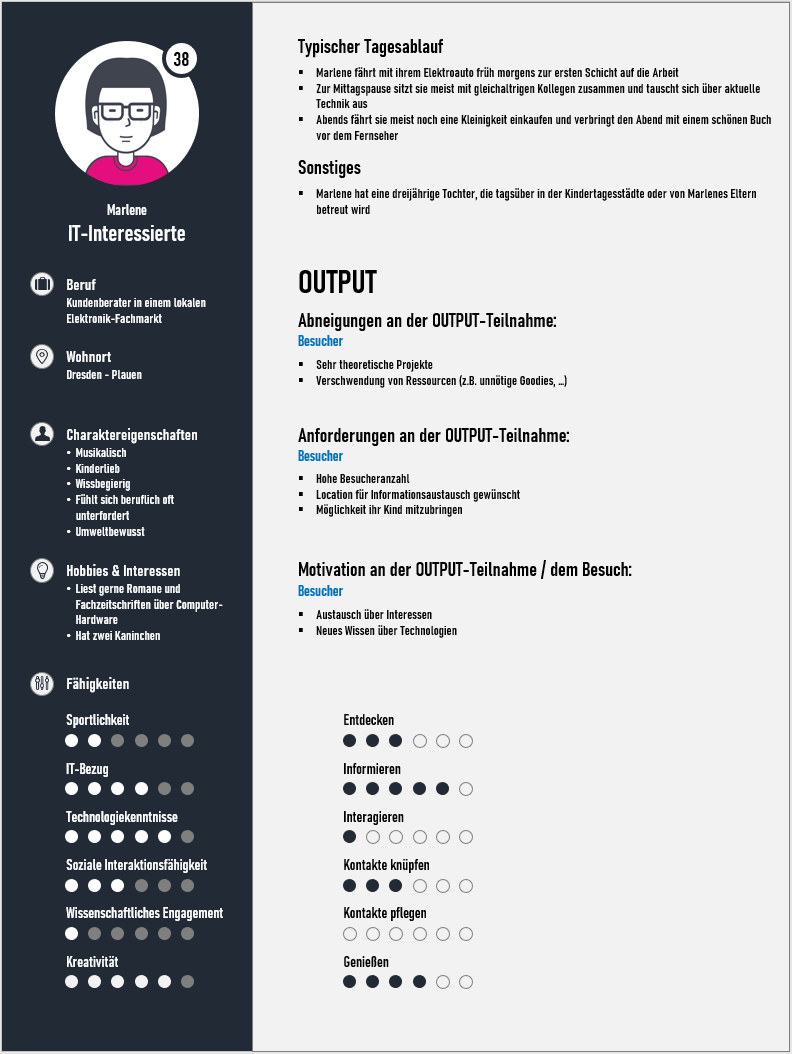 © Photo by Javier De La Cruz on Unsplash
© Photo by Javier De La Cruz on Unsplash
Concept
user experiencePersona
Personas are individual model characters that represent (extreme) user types of a service or product. They help you to understand the users’ needs, experiences, behaviours and goals. Therefore, personas can guide ideation processes and help you to create a good user experience. Working with personas has become standard practice within many human centred design disciplines to collate research and personify trends and patterns in the data. It is very common to couple personas with the decription of scenarios that usually start by placing the persona in a specific context with a problem they want to or have to solve.
Creating a Persona
Research
The first step involves data aggregation about the users and the context, e.g. via surveys, interviews or statistics.
Create individual characters
Next, data patterns are used to model few fictional individuals. Often, they represent power/lead users, A persona, like a “real person”, consists of a name and a corresponding photo, in order to have a realistic picture in your mind while working. Commonly used features are:
- Sociodemographic (age, sex, marital status, social background)
- Socio-economic data (income, occupation, education, social background, social status)
- Geographical information (place of residence, origin, regional/local/international orientation)
- Psychographic characteristics (attitudes and opinions, values and status awareness, preferences and hobbies, but also dislikes, habits, motivations, aesthetic feelings, goals)
- Product-related characteristics (wishes, expectations, needs)
- Consumer behaviour (brand loyalty, purchasing range, repurchase rate, price sensitivity, etc.)
A persona is usually recorded as profile or in a narrative style in continuous text an may be accompanied by a scenario. The poster below is taken from Lene Nielsen’s article Personas [Nielsen]. It decribes a more holistic way of developing personas.

Examples


